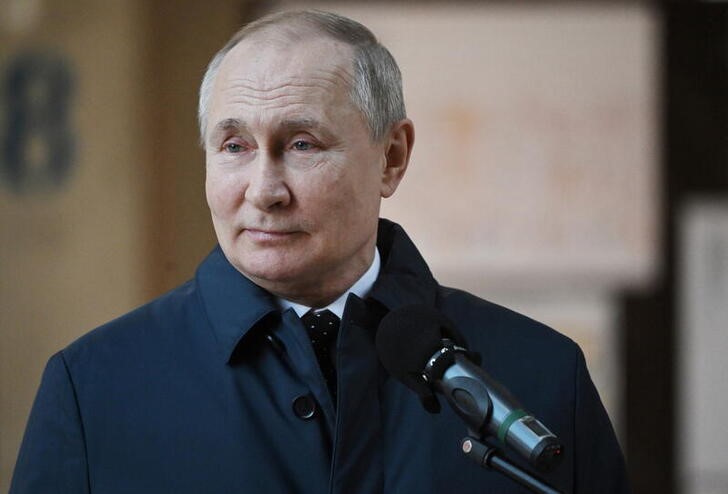By Barani Krishnan
Investing.com -- He only had to hint at a squeeze of Russian energy exports at one time, and oil traders would sit upright and crude prices would fly higher. But Vladimir Putin’s rhetoric might be losing its impact with the energy crowd, especially after a public dressing-down on Friday from one of the Russian president’s greatest allies — Indian Prime Minister Narendra Modi.
Crude prices settled flat to slightly higher on the day. But on a weekly basis, they fell for a third straight week on news that Iraq’s Basrah oil terminal had resumed pumping following a brief disruption over an oil spill, and after the dollar's resurgence on expectations of another bumper rate hike by the Federal Reserve next week. A jump in the U.S. oil rig count to just shy of 600 was also a negative for the market.
New York-traded West Texas Intermediate, which serves as the U.S. crude benchmark, settled just a cent higher at $85.11 per barrel. For the week, it was down almost 2%, adding to the near 7% loss over two prior weeks.
Brent, the London-traded global benchmark for oil, settled up 51 cents, or 0.6%, at $91.35 per barrel. It fell 1.6% on the week, adding to the near 9% slump over two previous weeks.
While the events in Iraq and the dollar’s resurgence dominated Friday’s headlines on oil, inconspicuously weighing on the market, however, was also the image of a Putin rendered somewhat smaller by his key ally Modi, after the Indian premier refused to share Russia’s passion for the war in Ukraine.
“It’s a fact: Putin’s scare talk on energy is getting less scary these days,” said John Kilduff, partner at New York energy hedge fund Again Capital. “And Russia’s key allies, India and China, showed this week they are more like fair-weather friends than one that would stand with Putin in the eye of the storm.”
Modi exhibited precisely that sentiment on Friday.
"I know that today's era is not an era of war, and I have spoken to you on the phone about this," the Indian leader told Putin as they chatted on the sidelines of the Shanghai Cooperation Organisation summit, which the Russian president has tried to use as a showcase of his alliance with China and India.
How Modi and China’s leader Xi Jinping respond to Putin and the war in Ukraine is important to crude prices, particularly from the perspective of the price cap on Russian oil that the Group of Seven countries want to impose from December to limit what Moscow can earn from its energy exports to fund the war against Ukraine.
For the record, India dismisses the G7 oil price cap, saying energy security needs — and economics — will guide crude purchases by its refiners. But within that reaction was India’s tacit admission that the lower the price of Russian crude, the more the demand from Indian refiners will be. And that basically underscores the aim of the oil price cap, which is to reduce Russian revenues from oil. Crude importing nations, led by China and the United States, also get to see lower prices for a barrel in the futures market when discounted Russian oil lands on the physical market, pressuring competing barrels from Saudi Arabia and other producers.
China’s Xi also refrained from embracing Putin exuberantly over the war, forcing the Russian leader to publicly acknowledge “the well-balanced position of our Chinese friends in connection with the Ukrainian crisis.” It was a concession Putin had to make after the Russian military lost important territory in the war this week to Ukrainian forces.
In a further concession, Putin said on Friday Russia will uphold its energy commitments if the West lifts its restrictions against the Russian Nord Stream 2 gas pipeline that runs across the bloc. Just a couple of weeks ago, Putin virtually held oil and gas exports ransom in Russia’s dealings with the West.
